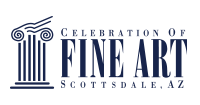More often than not, the path to our predestined careers is not a linear one. But usually, that winding path provides the skills and lessons needed to excel in whatever lies ahead.
That certainly has been the case for jewelry artist Chad Lieske. He didn’t set out to design jewelry. In fact, that wasn’t really even on his radar. He went to school for 3D sculptural design with a focus on ceramics and sculpture. But, after moving to Los Angeles and no means to recreate the studio environment he was used to (a space equipped with a wheel and kiln), Chad looked for an alternative.
As fate would have it, he came across jewelry making and discovered that the process wasn’t all that dissimilar to sculpture––it was just on a much smaller scale. And that scale enabled Chad to set up a studio in his home and get to work. In just a year’s time, Chad has collected a following for his unique wearable art and he’s constantly exploring ways to push his designs to the next echelon.
Read on or watch Chad’s interview below to learn more about his story.
When did you know art was your calling?
As a kid, I always enjoyed drawing and creating whether it was making or building things, or working on mechanics. We grew up on a farm in a town of 900 people and we didn’t have the luxury of riding our bikes to the neighbor’s house. We had to stick around. So, we really embraced being crafty with our hands and building from the ground up. I think that kind of inspired like the early stages of creating.
How did your journey progress?
I got my undergrad at the University of Minnesota Duluth and when I went there, I wanted to be an artist, but my parents thought I should take some business classes too. But the way that unfolded, it was like one or the other––you couldn’t do both. So I went into the art school and studied 3D sculptural design with an emphasis in ceramics and sculpture. I kind of knew at that point that that was something that I was interested in, but it was all ceramics and pottery. When I got into the jewelry, it was mainly because I moved to LA from Minnesota and I didn’t have the means of going to a studio and having a wheel and a kiln. So, I started doing wax work and making rings like that. I was making ceramics [in a way], but on a micro scale and I could do it at my kitchen table. So I started doing that and that’s what led me to all of this.
What do you love most about creating art?
Seeing it come to life. There’s so many stages––shaping then casting the wax into silver is one step (it starts as this little blue sculpture then turns into silver). Then there’s setting the stone. Watching the change happen and then seeing the finished product when the stone is set and the polish is done––it has this feeling of accomplishment.
How do you keep yourself challenged?
Getting new stones or seeing new techniques and how other artists work––how they did it and gaining an understanding how I could accomplish something like that. It’s like this endless world of exploration because jewelry can go so fine and so in depth that I feel like I’m just scratching the surface now. It gives me so much room to continue to grow as an artist.
What brought you to the Celebration of Fine Art?
What brought me to the Celebration of Fine Art is a really funny story. When I was 14 or 15, my grandparents asked us (me and my brother Luke) what we wanted to be when we grew up and we told them that we wanted to be artists. My grandpa said, “Well, how are you going to make a living and support a family being an artist?”. I looked at him and said I’m not sure exactly how I’m going to do that, but I’ll figure it out. I want to follow my passion. And it’s funny to think a 15-year-old saying that, but he looked at me and said, “When you guys come visit us in Arizona, we’ll take you to a gallery where you can go and talk to the artists, walk around and see how they did it and see what they say.” They took us to the Celebration of Fine Art in 2004 and that was the beginning stages of the journey––of wanting to be a fine art artist and showing at the gallery level.

